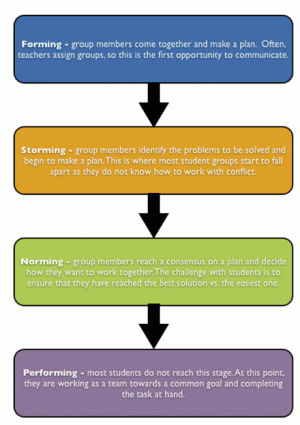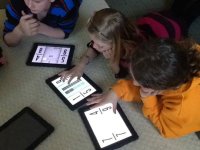Teaching the Essential Skills of the Mobile Classroom
Think back 20 years. Pay phones still worked, and only doctors carried pagers. Laptops weighed as much as bowling balls, and few of us had Internet access. In fact, much of what we now consider commonplace -- Google, email, WiFi, texting -- was not even possible. If that was 20 years ago, where are we going in the next 20?
We are all going mobile! Tablets, smartphones, Chromebooks -- and yet, these devices only serve as the most recent iteration of mobile technology in the classroom. Remember Netbooks? How about those old-school Macbooks that looked like toilet seat covers? What if we go back further? What about chalk and slate?
In essence, we have always had mobile tools in the classroom, but our current devices offer significantly more capabilities while also advancing at an appreciably more rapid rate. If, in the past 20 years, we've gone from green screens to Google Glass, where will we be in the next 20? Think about the tools that you had available when you were the same age as your students, and now imagine what may be possible when they are our age! How will we prepare our students for what has yet to even be imagined? What if, instead of focusing on the current tools of the mobile classroom, we hone in on skills -- the same ones that we've actually been teaching all along?
Communication
Communication has always has always been an essential skill in the classroom. In the past, we strived to help our students become effective communicators both orally and through writing. However, with the plethora of communication tools made available by mobile devices -- texting, instant messaging, Skype, Twitter -- we may be doing our students a disservice if we ask them to communicate only via one or two mediums.
Not only do students need to be able to present themselves in a face-to-face setting, but also via video, audio and text. Crafting an articulate tweet or blog post may be as critical as a five-paragraph essay, and in-class presentations may be as important as delivering a Skype talk or Google Hangout. With the influx of options afforded by mobile devices, not only do we need to teach students what to communicate, but also how.
Collaboration
The Partnership for 21st Century Skills explicitly lists communication and collaboration together in their Framework for 21st Century Learning. If we use their definition of collaboration, students should be able to work effectively with diverse teams, assume shared responsibility, and value individual contributions. While this is great at a theoretical level, how do we actually teach collaboration?
Several years ago, I volunteered my seventh graders to be part of a research project called HARP. For three days, they worked in groups with special handheld devices to solve the mystery of an alien invasion. While my students did an excellent job delegating and dictating, they struggled to actually collaborate. In one group, a student had the information but refused to share. In another, leaders chose to ignore their teammates. It became very clear that they did not know how to assume shared responsibility and value individual contributions.
As we debriefed the experiment, I realized that my students had no idea what collaboration really looks like, so I introduced them to Bruce Tuckman's group development model.

When they saw the concrete phases, my students realized that their groups rarely moved past the Storming stage, as they didn't know how to productively handle differences of opinion. Moving forward, I built scaffolds for collaboration into assignments, reminding them of what they should achieve at each stage of group formation. By providing these scaffolded opportunities, we can better set students up for successful collaboration.
Connection
In mobile classrooms, communication and collaboration are no longer limited by physical proximity or time. Have a question? Tweet it. Need advice? Post it to a class Edmodo wall. While it is still important that we make face-to-face connections, it is increasingly critical that we learn how to take advantage of virtual ones.
Jason Markey, voted NASSP Digital Principal of 2014, wrote the preceding shortly after launching the #leydenpride hashtag. As a district, Leyden wanted to model positive connection building across all media, so they built it into the fabric of their community.
Creation
Through connection, students gain a larger audience for their creations; and through creation, we provide them an opportunity to construct their own knowledge. While it has always been possible for students to create projects, mobile devices provide options and choices that were previously inconceivable, pushing our thinking beyond the constraints of an 8.5x11 page (as Shawn McCusker points out in Paperless 2.0).
Beyond replacing outdated texts and cumbersome notebooks, mobile devices enable students to create and share from anywhere and at any time, unlocking creativity and removing the limitations to what's possible. They provide students with cameras, audio recording studios, blogging platforms, and multimedia tools allowing students to construct new learning artifacts across their curricula and in a variety of contexts.
Where Are We Going?
In a recent keynote, Greg Kulowiec (@gregkulowiec) reminded teachers, "Technology is not the emphasis. It's the tool to do thoughtful work." Apps will change. Operating systems, capabilities, and even devices change. However, if we focus on a core set of essential skills -- communication, collaboration, connection and creation -- and start to develop curricula that will benefit our students regardless of the technology, then we can truly embrace a mobile curriculum.
